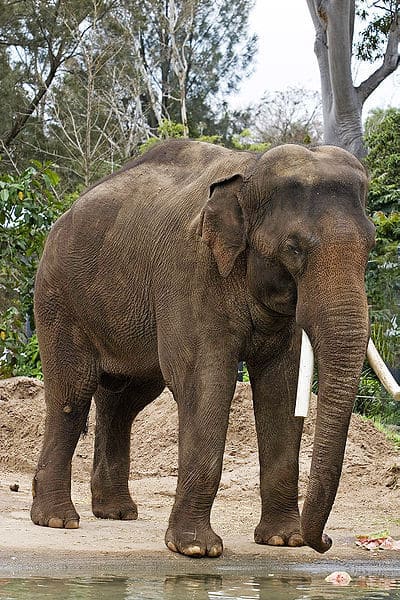Intelligent and beautiful, the Asian elephant is running out of time unless humans step aside and give it some room.
Shrinking habitat and conflicts with humans could hurt the endangered elephant’s numbers and throw the species’ viability into question.
In a new study published this month in the journal Biological Conservation, University of Floridaresearchers looked at what must happen for the species to avoid extinction.
The researchers created a population model to look at future land- and human-conflict scenarios the elephants might encounter, to determine what kind of effect shrinking acreage set aside solely for elephants and other wildlife would have in conjunction with increasing instances of human-elephant conflict.
They simulated elephant populations over a 500-year period and found scenarios that led to more than 90 percent decreases in elephant population during that time span. Scientists term that kind of population drop “quasi-extinction.”
They found that even moderate levels of conflicts with humans led to large drops in elephant numbers, and that those problems got worse as humans and elephants continued to occupy the same spaces.
“One of our findings, is that if human caused elephant deaths continue to increase, elephant populations will not do well in the long term. They’ll need more and more space free of human habitation. That’s a really tough task in countries like India, where you have high densities of people and limited space,” said Varun Goswami, the study’s lead author. “Therefore it’s imperative that human-elephant conflict is effectively managed.”
Elephants are large and their space and food requirements are too, Goswami said. In areas where humans and elephants co-occur, conflict often ensues.
Farmers whose crops are trampled or their homes damaged by elephants are understandably unhappy, he said, and often retaliate. Sometimes people chase the elephants away — or worse.
The population-model study showed that if the Asian elephant is to survive, even small increases in conflict-induced elephant deaths must be offset by having more “inviolate” habitat set aside solely for the pachyderms, because those conflict increases led to large population decreases.
That’s not an easy thing to manage, however, in the world’s second-most-populated country.
Residents often try crude measures, such as flashlights that scare elephants away, or fences made of hot pepper, to try and keep the animals from tromping through small farms, he said.
But those measures don’t always work.
Insurance policies that give agricultural producers better compensation for elephant-induced damage could help, he said.
Goswami worked on this study as part of his doctoral degree, under the supervision of UF Institute of Food and Agricultural Sciences professor Madan Oli. Divya Vasudev, who also earned her doctorate at UF, is a co-author of the research paper. The study was funded by the UF Alumni Fellowship program.


